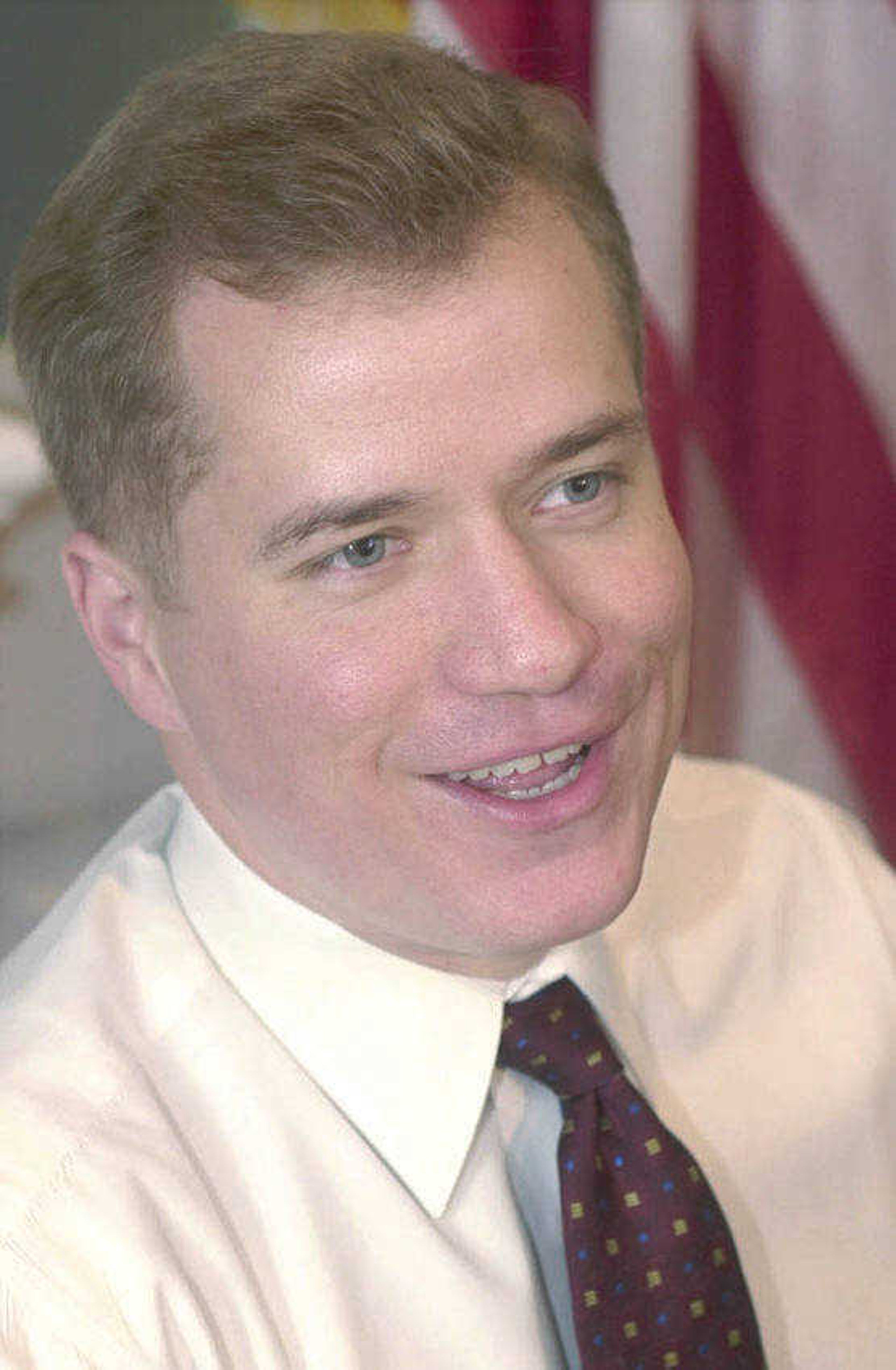AP Exclusive: Blunt planned campaign just days before quitting
JEFFERSON CITY, Mo. (AP) -- On the weekend before his State of the State address, Gov. Matt Blunt convened his campaign team for a strategic retreat at a luxury Ozarks resort just south of Branson. Confidence filled the room. ...
JEFFERSON CITY, Mo. (AP) -- On the weekend before his State of the State address, Gov. Matt Blunt convened his campaign team for a strategic retreat at a luxury Ozarks resort just south of Branson.
Confidence filled the room. Blunt's trusted advisers discussed a fundraising goal that could have shattered the state record, developed a TV ad blitz to begin airing before spring and honed a campaign message for a competitive challenge from Democratic Attorney General Jay Nixon.
Although the Republican governor never said so directly, he left little doubt: Blunt was running for re-election, and he was running to win.
So perhaps no one was more shocked than those in Blunt's inner circle when, just 10 days later, Blunt announced his exit from the race.
"Everyone was convinced we would win this race," said John Hancock, a Republican consultant and pollster who attended the campaign retreat. Hancock, Blunt's campaign spokesman, learned the governor was not running just hours before he publicly announced his decision Tuesday.
The Associated Press confirmed Blunt's campaign retreat with multiple participants, several of whom recounted the details on condition of anonymity.
The gathering at the Big Cedar Lodge south of Branson included top-ranking staff from the governor's office, pollsters, media specialists, fundraisers and people responsible for Blunt's communications and grass-roots organizing. It had been a while since any similar such meeting. The gathering, in essence, amounted to a kickoff for the campaign year.
Participants described the governor as inquisitive, engaged, involved in all aspects of the planning.
Before their meeting, Blunt already had shot video footage for a first-round of campaign commercials. The plan developed that weekend called for Blunt's commercials to begin running before spring. The goal was to beat Nixon to the punch, to get a couple of weeks of uncontested air time in which Blunt could lay out his accomplishments directly to voters before they got bombarded with competing messages.
Blunt already had raised almost $10 million since he was elected in 2004, though his campaign had barely $4 million on hand as a result of previous expenditures and refunds required by a Supreme Court ruling. Blunt's campaign still needed to refund about $2.3 million, which would put him nearly even with what Nixon had on hand.
But Blunt had shown the ability to rake in large amounts of money before. Some people thought he could take in about $20 million -- twice what he raised for the 2004 election and far more than the Missouri candidate record of almost $15.7 million set by Republican Sen. Jim Talent in his unsuccessful 2006 re-election campaign.
The campaign team discussed various factors that could influence the governor's race -- even several initiative petitions being circulated, mindful of how a stem cell ballot initiative spilled over into the 2006 Senate race. Blunt also reviewed internal polling data, which meeting participants said showed him closing the gap, but still down, to Nixon.
Blunt's message, as sharpened during the meetings, would proclaim he converted a $1 billion inherited shortfall into three straight years of budget surplusses, significantly boosted education spending, presided over the creation 90,000 new jobs since he took office and transformed a broken health care system.
That same message formed the foundation for Blunt's televised State of the State address several days later, on Jan. 15.
Those who attended the campaign retreat believed it could be a successful message, even though Nixon would highlight Blunt's cuts to the Medicaid health care system, warn the economy was faltering and assert that the governor had not done enough for education.
"When you saw the story that could be told on an election campaign, you began to see the roadmap to victory very quickly," Hancock said. "You just looked at that message and you said, `Yes that's how you can get elected,' and everybody felt it."
After the meeting, Blunt went home to his family. Then he started thinking, and praying, and rethinking his campaign decision. There was no "magic moment." But sometime after the State of the State speech, he privately decided not to run.
On Jan. 21, while at the Governor's Mansion, he recorded a video statement explaining he had accomplished virtually all of his goals as governor, no longer had "the same sense of mission" and wanted to spend more time with his wife and child.
Blunt publicly released the video the next day.
In front of a phalanx of perplexed reporters on Jan. 23, Blunt denied numerous other suggested reasons for his departure while reasserting his waning sense of mission and love for family.
"I am absolutely at peace with my decision," Blunt said.
Yes, Blunt confirmed, others were surprised. Some even tried to talk him out of it.
"But once they understand my reasoning, they're supportive," he said.
Supportive, but still surprised.
Connect with the Southeast Missourian Newsroom:
For corrections to this story or other insights for the editor, click here. To submit a letter to the editor, click here. To learn about the Southeast Missourian’s AI Policy, click here.









